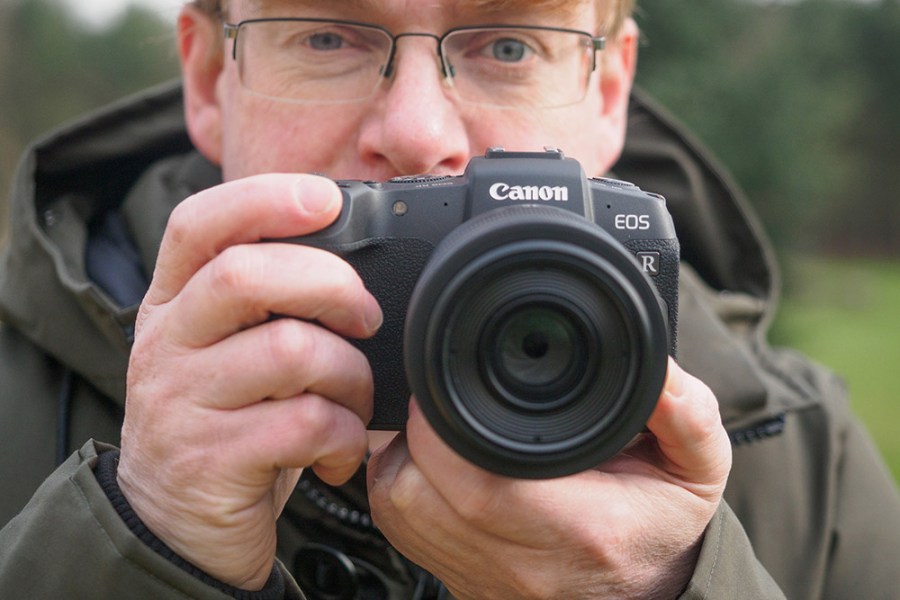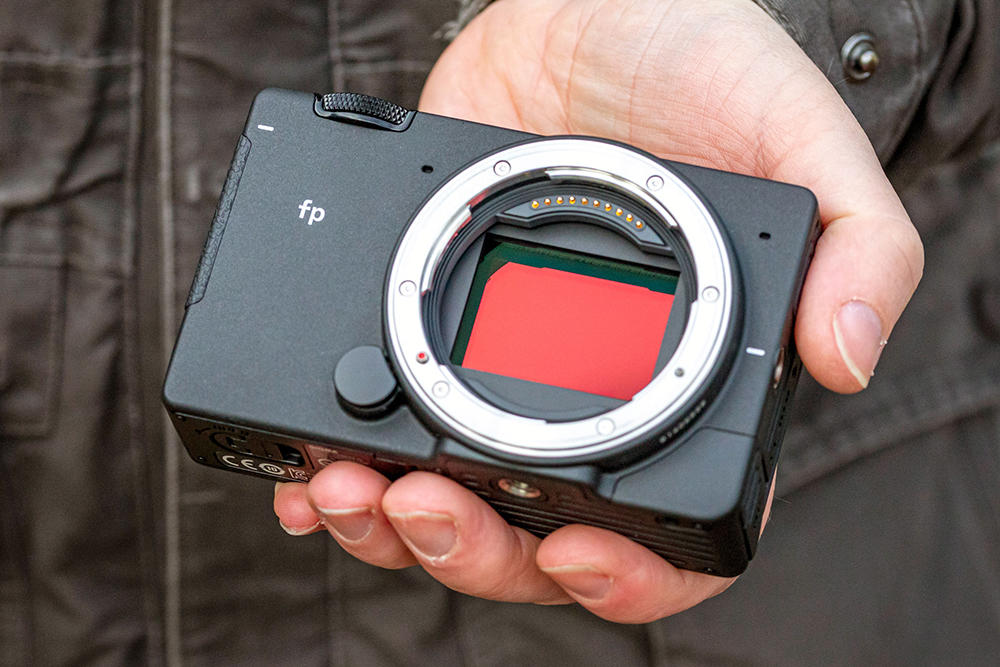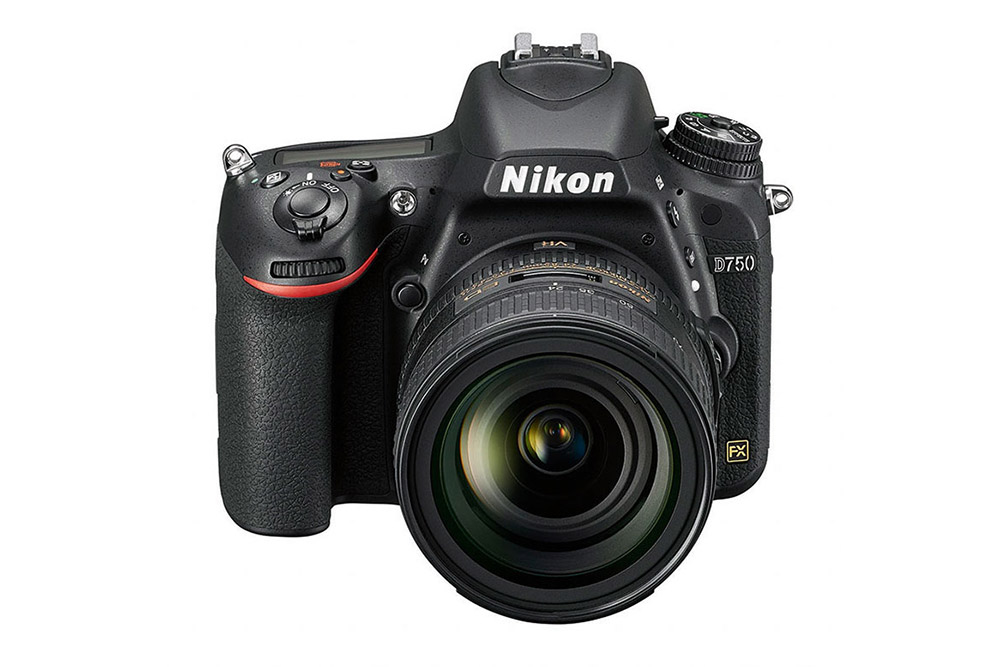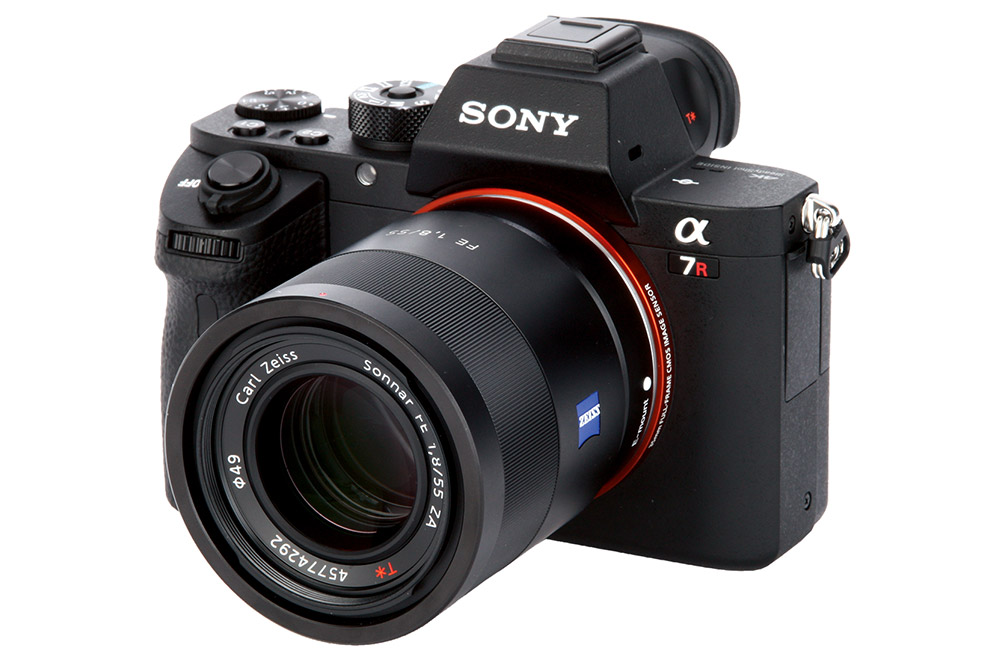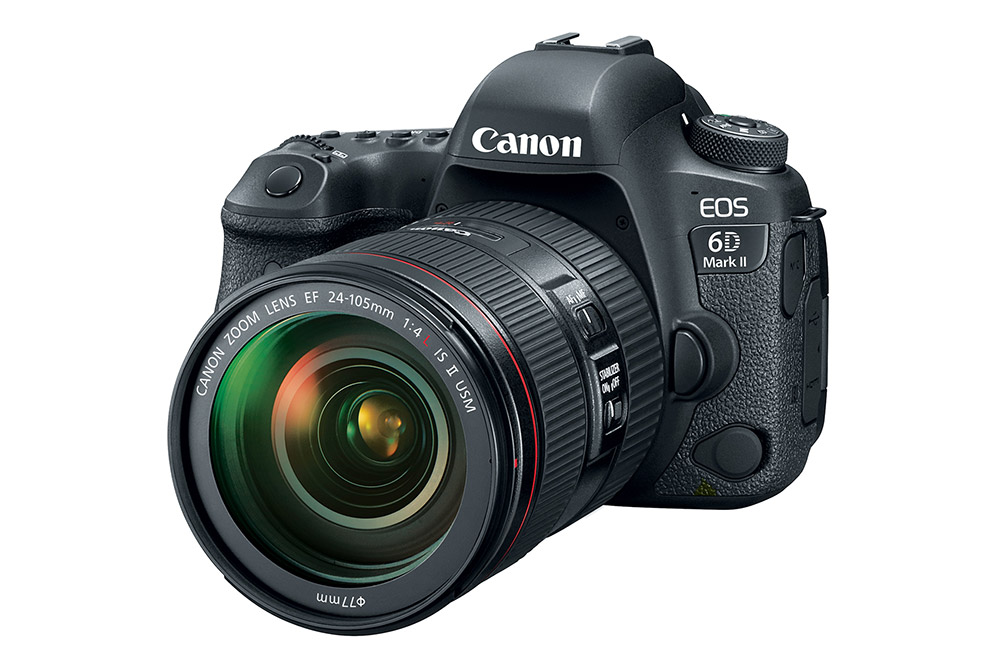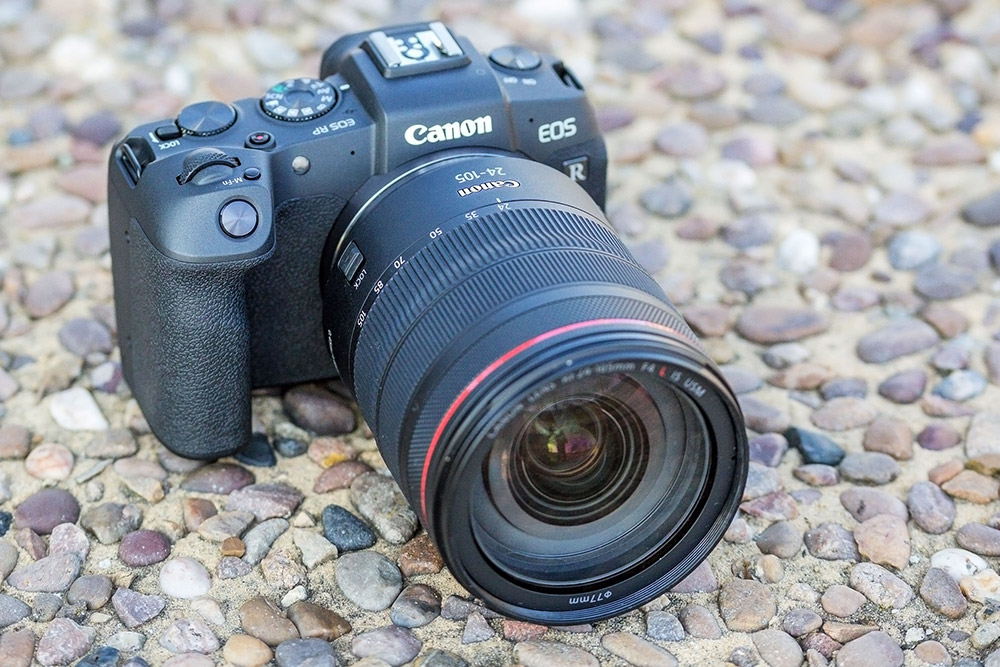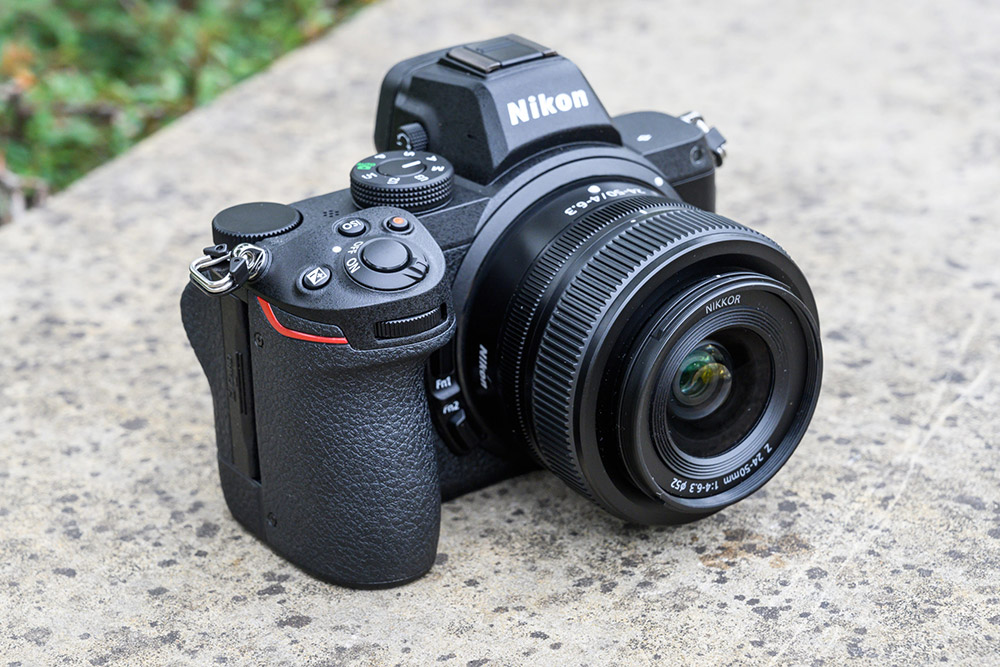13.26.31 The best cheap full-frame cameras in 2023 | |
We pick out the best cheap full-frame cameras you can buy, with a selection of top-class large-sensor models costing less than $1,500 / £1,500. The best cheap full-frame cameras allow you to maximise your image quality without spending over the odds. Whether you’re shooting on a DSLR or a mirrorless camera, full-frame offers gives you the best of the best when it comes to both photography and video. You might think a full-frame camera would therefore require a significant cash outlay, however, this isn’t always the case. You just have to know where to look. First off, if you’re not familiar with full-frame, it refers to an imaging sensor measuring 36x24mm. This is roughly the same dimensions as a single frame of 35mm film, which is where the name comes from. Full-frame sensors are physically larger than most of the other sensor types you’ll generally find in consumer cameras – APS-C, Four Thirds, 1-inch, etc, the only exception being medium format. A sensor that’s physically bigger allows for the use of larger individual photosites, meaning greater dynamic range (i.e. the range of tones from dark to light in an image) and cleaner images with less digital noise. This, in turn, makes higher ISO settings more useable, and thereby improves camera performance in low light. Full-frame sensors are also better for producing images with a shallow depth of field, and therefore are favoured by portrait photographers in particular. There’s plenty more we could say here, but you can read our APS-C vs Full-Frame guide if you need a full breakdown. Of course, all this comes at a cost, and full-frame cameras are generally more expensive than their smaller-sensor counterparts. At least, they are when they’re brand new. And that’s where this guide comes in! We’ve compiled the best cheap full-frame cameras you can buy, picking out a selection of slightly older models that have impressed us, and are still widely available on the second-hand market. What to look for in the best cheap full-frame camerasIn brief, here are the key specs and features you should be mindful of when shopping around for the best cheap full-frame cameras. DSLR or mirrorless? You’re going to be choosing one or the other in the question of DSLR vs mirrorless. Mirrorless cameras tend to be smaller, with more sophisticated autofocus and video systems. DSLRs are generally more rugged and weatherproof, with better battery life, and the immediacy of an optical viewfinder (mirrorless systems use electronic ones). The best DSLR systems also tend to have more lens options, simply because they’ve been around longer. However, the best mirrorless cameras very much represent the future of imaging, with manufacturers like Canon and Nikon betting big on their mirrorless line-ups, so these can be the more forward-thinking buy. Lens mount. Look at the lenses available for a system, particularly with regard to what you want to shoot. A full-frame sensor is only as good as the lens attached to it. Continuous shooting speed. If you’re capturing fast action, then a camera’s burst speed could mean the difference between nailing and missing the shot. While the older cameras on this list won’t be matching the blistering burst speeds of the likes of the Nikon Z9, you can still get respectable frames per second (fps) rates on a cheap full-frame camera. ISO range. The higher an ISO ceiling a camera can reach, the better its performance in low light, generally speaking. However, some cameras do better at high ISOs than others, so it’s always worth doing some research rather than just relying on numbers. We’ve discussed this in our entries below, based on our findings from our full camera reviews. If you’re looking for more cheap options, we have guides to the best cameras under £500 / $500, the best cameras under £300 / $300, and even the best cameras under £200 / $200. Just bear in mind you won’t see any full-frame sensors on those lists! So, without further ado, let’s get into the best cheap full-frame cameras you can buy right now…
Read on to find out why these are our favourites for budget conscious buyers… The best cheap full-frame cameras: our full listBest camera under $900 / £900 – Sony Alpha A7 II
The A7 II has a weather-sealed body and pronounced handgrip. At a glance:
The A7 II is now two updates old, with Sony having introduced the Sony A7 III back in February 2018, and the Sony A7 IV in October 2021. However, the A7 II is still available to buy new, and at less than $900 body-only, it’s a real bargain buy. The A7 II is a mirrorless camera with a 24MP CMOS sensor that’s harnessed to a Bionz X processor, has 5-axis in-body image stabilisation, a hybrid AF system with 117 phase detection points, 5fps continuous shooting and the ability to shoot Full HD video with the S-Log 2 gamma. In addition, the A7 II’s magnesium alloy body is weather-sealed and its grip is much improved upon the one on the original A7. Our tests found the A7 II is a snappy performer and it can capture sharp images of fast-moving subjects, but it’s not quite up to the pace of the most recent models so it’s most at home with stationary or slow-moving targets. The Sony Alpha A7 II uses the Sony E-Mount, and there are a wide range of lenses available, so you should be able to find the right lens for you. What the A7 II really does well is produce superb image quality images, both in bright light and low light when the ISO has to be raised. Overall, the A7 II is a highly recommended full-frame model that offers huge imaging potential in a lightweight body. It’s a camera that will draw the attentions of those who after one of the smallest, yet most powerful full-frame cameras on the market. Pros:
Cons:
Best cheap full-frame Panasonic: Panasonic Lumix S5
The price of the Lumix S5 has dropped since its successor arrived. At a glance:
The Panasonic Lumix S5 has two big things going for it in terms of its price coming down. First, it’s been out for a good couple of years now. Second, a shiny new version has very recently been announced. The Panasonic Lumix S5 II stole headlines at the start of 2023 for its comprehensive suite of video features and sub-2K price. Panasonic has made no secret of the fact that the S5 line is designed to be the full-frame equivalent of the popular, video-oriented GH cameras for Micro Four Thirds. The Lumix S5 is fairly lightweight for a full-frame model; this was a response to criticisms of the heft of the first cameras in the series, the S1 and S1R. While it does offer plenty to entice the vlogger and video shooter, it’s no slouch when it comes to stills. The Lumix S5 produces sharp, vivid images full of vibrant colour, and boasts a rack of useful features, including an electronic shutter for silent shooting. This can manage shutter speeds of up to 1/8000sec – decent, but rivals are faster. It can also use the sophisticated stabilisation system to stitch together eight separate exposures with adjustments to the sensor position, resulting in a 96MP image. This was Panasonic’s most affordable full-frame camera on release, and the second-hand market has been very kind to it, with models in very good and excellent condition plentifully found for less than £1K. The Leica L lens mount gives you access to an impressive range of lenses, and helps cement the Lumix S5 as a very tempting and reasonably priced proposition. Pros:
Cons:
Smallest full-frame camera: Sigma fp
The Sigma fp is one of the tiniest full-frame cameras ever made. At a glance:
As you can see throughout this page, the form factors of full-frame cameras tend to look quite similar. As such, it’s nice to see a manufacturer taking a bit of a risk and coming out with something that looks genuinely different – so it is with the Sigma fp, a tiny cuboid that scarcely seems like it’s big enough to hold a full-frame sensor, but most assuredly is. As Sigma CEO Kazuto Yamaki tells it, the design concept for the Sigma fp was to make the smallest possible full-frame camera, thereby delivering a format suitable for travel photography. Naturally, this means a few sacrifices are made; there is no viewfinder, no mechanical shutter, no real handgrip, and no built-in flash. However, that’s not to say you have to completely do without, as many of these things are available as optional add-ons. The Sigma fp is designed to be modular, which is a super-interesting concept for a full-frame camera. But, does it work? In our review, we were broadly positive, if a little circumspect about certain things. Fundamentally, if you want a small full-frame camera, the Sigma fp is it, and it produces great-looking images, with RAW files every bit as good as those from larger cameras. You do need to pair it with small L-mount primes for the concept to still make any sense though. Sigma subsequently released the Sigma fp L, more of a companion piece than a successor, with a high-resolution 61MP sensor, and the addition of an optional viewfinder to bolt onto the side. If a viewfinder is a deal-breaker for you, this is the buy, but the original Sigma fp can generally be picked up cheaper if not. Pros:
Cons:
Best cheap Nikon DSLR: Nikon D750
The Nikon D750’s autofocus system still holds up well today. At a glance:
Nikon’s D750 has been a popular choice of DSLR for enthusiast, semi-pro and pro photographers. It was overshadowed in early 2020 by the arrival of the Nikon D780, but given that it’s now selling at under £750 body-only, the D750 is still a very attractive proposition. Inside the D750 is 24.3MP full-frame CMOS sensor with an optical low-pass filter to cut out moire patterning. This chip is paired with an Expeed 4 processing engine, which enables a continuous shooting rate of 6.5fps at full resolution. Although the D750 pre-dates Nikon’s SnapBridge technology, it has Wi-Fi connectivity to enable image-sharing and remote control via a smartphone running Nikon’s Wireless Mobile Utility app. Nikon uses a monocoque design for the D750 and it is made from a mix of thermoplastic and carbon fibre with magnesium alloy top and bottom sections. It all adds up to a rugged and solid-feeling camera. There are 51 user-selectable AF points and the D750 gets subjects sharp very quickly, even in very gloomy conditions when you’re composing in the viewfinder. As you’d expect, the image quality from the Nikon D750 is excellent up to around ISO 1600 and there’s good dynamic range, but the Highlight Metering Mode is especially useful when it’s essential to avoid blown-out highlights. Using the long-established Nikon F-mount, there are a wide range of lenses available, starting with affordable 50mm lenses, like the ‘nifty fifty’ Nikon 50mm f/1.8G lens, going all the way up to 800mm telephoto lenses. Nikon has covered almost every feature likely to appear on the wish-list of an enthusiast photographer and added a few extra for good measure. The build quality of the camera is very good and it strikes a great balance between the size and weight. Thanks to the large grip at the front the D750 feels incredible in hand, particularly with larger lenses. With the mode dial, button lay-out and menu system being akin to Nikon’s entry-level DSLRs, any amateur photographer upgrading to full-frame should feel right at home. In the D750 Nikon created a camera that got all the fundamentals right and, as a result, it remains a great all-round DSLR. Pros:
Cons:
Best camera for still-life photography: Sony Alpha A7R II
The A7R cameras focus on resolution above all else. At a glance:
With 42.4million effective pixels on its backside illuminated sensor, the mirrorless A7R II is the highest-resolution camera in our chosen line-up of budget full-frame cameras. Despite that high pixel count, the A7R II’s Bionz X processing engine still enables full-resolution shooting at up to 5fps. The price of this powerful camera has been driven down by its two successors, the A7R III and A7R IV, so it can be picked up for a real bargain price.
There’s also a hybrid autofocus system with 399 user-selectable AF points that cover 45% of the imaging area, which means that you can target the subject precisely. It’s also pretty fast, but the A7R II is more likely to appeal to landscape photographers than avid sport-shooters. Our tests revealed that the A7R II has excellent dynamic range, hitting 13.1Ev at ISO 100, which, paired with its superb detail resolution, great noise control and effective 5-axis image stabilisation system, explains its enduring attractiveness to landscape photographers. The Sony A7R II is also capable of recording 4K video. What’s more, in Super 35mm mode, there’s no pixel binning and features such as S-Log2 Gammas and Time Code are on hand along with 3.5mm ports to connect an external mic and headphones. The camera benefits from 5-axis In Body Image Stabilisation (IBIS), and this works with any lens attached to the camera, great for using budget lenses without optical image stabilisation, or even old manual lenses used with an adapter. The A7R II delivers great accuracy and speed of focusing, particularly in low light, thanks to the the fast-hybrid AF system. The performance of the 42.4MP sensor is sensational and the way it controls noise and handles detail right up to ISO 25,600 is a real eye-opener. Pros:
Cons:
Best full-frame Canon DSLR: Canon EOS 6D Mark II
Using a Canon DSLR gives you access to the huge catalogue of EF lenses. At a glance:
Although it’s a DSLR, the 26.2MP 6D Mark II has a Dual Pixel CMOS AF design sensor, which means that it uses phase detection autofocusing in Live View mode as well as when the viewfinder is used to compose images. Consequently it focuses quickly and accurately, however you decide to compose your shots, but it’s worth bearing in mind that the 63 AF points that are available in the viewfinder are grouped quite close around the centre of the frame. The snappy focusing in Live View mode is especially useful on the 6D Mark II because it has a vari-angle screen that can be angled for viewing from any angle whether you’re shooting landscape or portrait format images. Canon has also done a great job of implementing touch control so you adjust settings and set the active AF point by tapping on the screen. That screen is also of use when you’re shooting video, which tops out at Full HD (1920×1080) at 59.94fps. Further good news is that the 6D II maintains its good detail resolution up to around ISO 6,400, making it a versatile all-rounder. As the Canon EOS 6D Mark II uses the Canon EF lens mount, there are a wide range of Canon EF lenses available, as well as a wide range of lenses from other manufacturers, giving you a great choice of both new and used lenses to look at. The EOS 6D Mark II is a stepping stone for existing Canon users to get into full-frame photography and is a viable alternative to the more advanced EOS 5D Mark IV. Those thinking about a move away from a Canon APS-C format DSLR will need to factor in the extra expense of upgrading a few EF-S lenses to a new collection of EF lenses. But when size and weight are critical – for example, when travelling or on location – the EOS 6D Mark II really comes into its own. Pros:
Cons:
Cheapest full-frame Canon: Canon EOS RP
The Canon EOS RP is an early entry to the RF-mount range. At a glance:
The Canon EOS RP was the second full-frame mirrorless camera in Canon’s line-up and it’s designed to compact and affordable. Like the Canon EOS 6D Mark II DSLR, the EOS RP has a Dual Pixel CMOS AF design sensor, however it has a remarkable 4779 selectable AF points. Also, as the RP is a mirrorless camera, those points area accessible for use whether the image is compose in the electronic viewfinder or on the 3-inch 1.04-million-dot, vari-angle touchscreen. In a step-up from the 6D Mark II, the RP is capable of shooting 4K UHD (3840×2160) video at up to 25fps. And, of course, you get to use the excellent AF system for shooting video as well as stills. While Canon has since introduced two EOS R cameras that are designed for entry-level and budget users – the EOS R7 and EOS R10 – both of these are APS-C models, not full-frame. Existing Canon DSLR photographers who are looking to switch to a mirrorless camera will appreciate the familiar handling of the RP and can use the existing EF-mount lenses via an adapter. Indeed, we found the EOS RP worked seamlessly with EF-mount lenses, so EOS DSLR users would only need to acquire an RP body to start shooting straight away. They won’t be disappointed by the images which have excellent levels of detail up to around ISO 12,800. There is a range of RF-mount lenses, but as with any relatively new camera system, it would be wise to have a look at what lenses are available, and how much they cost before investing in a new system. With the EOS RP Canon revealed its initial vision for what an entry-level, full-frame mirrorless model should look. It got a lot right, with a body design that handles much better than its odd-looking profile might suggest. Rather than simply porting across the existing EOS DSLR interface, it employed some clever new ideas, such as the Dial Function setting and Fv exposure mode. There’s plenty to like about this camera! Pros:
Cons:
Cheapest full-frame mirrorless Nikon: Nikon Z 5
The Nikon Z5 performs well in low light. At a glance:
Announced in July 2020, the Nikon Z 5 was introduced as the ‘catalyst’ camera, intended to push DSLR or APS-C format photographers to invest in a full-frame mirrorless model. It’s also Nikon’s most affordable full-frame mirrorless camera, which means there are a few compromises in comparison with the 24.5MP Z 6 above it in Nikon’s mirrorless camera range, but it still has plenty to appeal to experienced photographers. For example, while the Z 5’s 24.3MP sensor has standard design and isn’t backside illuminated, it has a 273-point hybrid AF system with Eye-detection for humans and animals in stills mode. There’s also the same 0.39-inch 3,690,000-dot OLED electronic viewfinder as Nikon’s other full-framers, a responsive 3.2-inch 1,040,000-dot tilting touchscreen and dual SD card ports plus 4K video capability. With detail maintained well up to around ISO 12,800 and good dynamic range, the Z 5 is a strong contender. The Nikon Z series has also a growing range of Z-mount lenses. However, as they’re all new and mostly premium optics, you may want to have a look through your options. They can be quite pricey. Originally touted as an ‘entry-level’ model the Z 5 is much more advanced than this basic classification suggests. It’s alike to the Z6 in terms of its build quality and handling but, by making a few spec alterations, Nikon was able to make it cheaper. The Z 5 is sometimes available as part of a bundle with a 24-50mm kit lens… something that might appeal to photographers who feel like they’re ready to advance to full-frame. Pros:
Cons:
Read More: https://amateurphotographer.com/buying-advice/what-are-the-best-cheap-full-frame-cameras/ | |
|
| |
| Total comments: 0 | |
